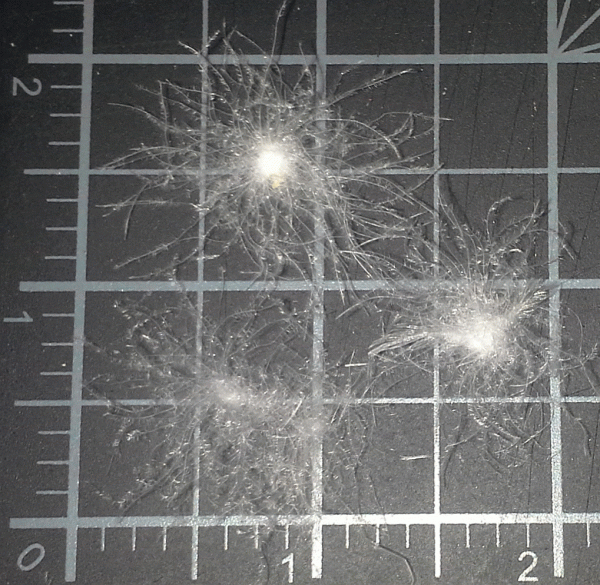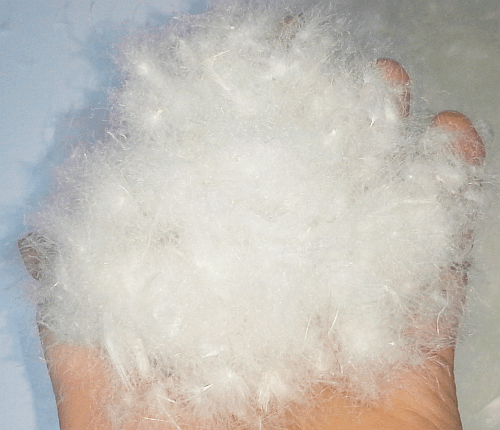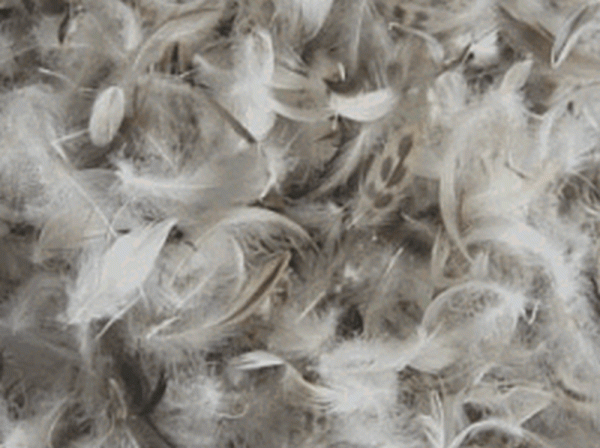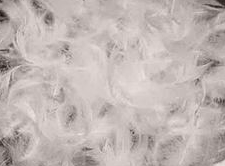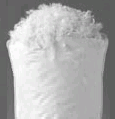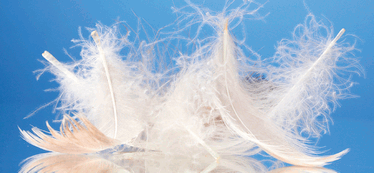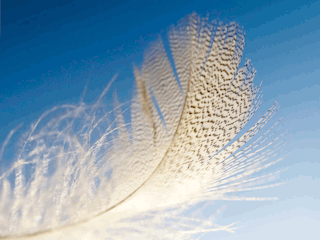
Our Bulk Down and Pillow Feathers come in a variety of choices that are easy to understand once you know what the numbers mean. Options include: 05/95, 10/90, 50/50 & 100% down. For most customers, the 10/90 mix is a good choice for adding more fluff to pillows, cushions or other home projects. Other more expensive mixes with higher fill power ratings are of more interest to commercial buyers who manufacture their own products for resale. For products that require more warmth in colder climates such as expedition sleeping bags, a higher percentage of down fill is needed. To Give You a Clearer Picture Regarding Duck & Goose Down & Feather Mixes, Check out the Other Asked Questions & Interesting Facts Below.
What Exactly is Down?
Fluffy down is made of tiny fiber clusters found in goose or duck feather mixes. You can identify the down in your feather mix by looking for little puffs that look similar to cotton balls on a smaller size scale, smaller & less dense. These are different than feathers & a good eye can tell what a down cluster looks like pretty quickly.
What are Feathers?
A descriptions of feathers is hardly needed as most people are familiar with what feathers look like. Basically a quill with a fringey natural fluff that is found along the center stem.
What 05/95, 10/90, 50/50 or 100/0 Mean?
When deciding which feather mix to buy, you need to know what the numbers mean. In each case, the 1st number refers to the percentage of down in the product & the 2nd number references the percentage of feathers included. Referencing in in Words would Look Like this: (%=Down/Feathers=%)
Examples of Down to Feather Ratios:
10/90 = 10% Down/90% Feathers
50/50 = 50% Down/50% Feathers
75/25 = 75% Down/25% Feathers
100/0 = 100% Down/0% Feathers
Which is Better, Goose or Duck?
In most cases down in used for warmth & feathers are used for support. Goose feathers usually have bigger down clusters while duck down is generally smaller in size. While both have important uses duck down feather mixes are often less expensive than goose not because of quality, but rather because goose down is promoted as a better valued fill for comforters & pillows by the bedding industry.
Duck feather mixes are a good choice for feather pillows, furniture & cushions when insulation & warmth are not needed while goose feather mixes are a better option for comforters, insulated coats & sleeping bags, particularly if you live in a colder climate & are looking for extra warmth.
Grey or White, Does it Matter?
Down & feather mixes are available in white or natural shades & while white down mixes are perceived as more valuable, there is in most cases, no difference other than that white down is easily hidden in lighter color products like white comforters & feather pillows.
Are Down Feather Mixes Sterilized?
Yes, all down & feather mixes we sell are washed, steam cleaned & properly sterilized to remove dirt, natural oils, smells, & bacteria, if present.
What is Fill Power, Does it Matter?
Often mentioned by comforter companies in product descriptions, fill power, is measured in cubic inches & is basically a measurement of how well a feather mix will bounce back after it is weighted down or crushed. Goose or duck down with a higher fill power will be fluffier & warmer but can take hours to fluff up if it is compressed for a while, such as a in the case of sleeping bags which are often rolled up for storage.
The ratio of down to feather percentages in the mix will impact the puffiness of the down & how soon it will fluff up sometimes referred to as loft. Feathers never loft technically & do not add to the fill power so generally, more down in the mix will add more fluff, more warmth & less weight. Sounds good & may be the deciding factor for some but don’t forget that the standard 10/90 or similar down feather mix was used for generations with good results in sleeping bags, couch cushions & pillows before the measuring of fill power was ever invented. Even though fill power is often suggested to be the new norm, feathers have there place & can help to add firmness & weight as in seat cushions or similar. When feathers are included, they will be harder to flatten & will bounce back faster In most cases, they will be warm enough for regular use where extreme weather conditions are not the issue.
Examples of Fill Power:
100% down = 950-1000 Fill Power
90% down = 690 Fill Power
75% down = 550 Fill Power
Examples of Possible Use:
10/90 = Pillows, Cushions
50/50 = Down Jackets
75/25 = Extreme Weather Sleeping Bags
Suggested Care Instructions:
It is best to never machine wash any items that include down to insure long lifetime use. washing in water may over time damage the shape of down products & cause the ability to create warmth less available. Down is also slower to dry & could cause a musty smell if it takes too long to dry. Rather, hanging your feather down products in fresh air or dry cleaning if needed is suggested.
Prices & How to Choose Tips?
So if you have taken the time to read this article, congrats, you now know more than most about goose & down feather mixes but if you are still confused & unsure of which feather mix to purchase, you are not alone. Experts & opinions abound on the subject but when it comes to your project, you will have to decide this for yourself. The best advise I can give is to buy the highest goose or duck down mix you can afford if extreme weather protection is needed. For all other projects were warmth of the item doesn’t matter, the 10/90 is a good & most popular choice.

